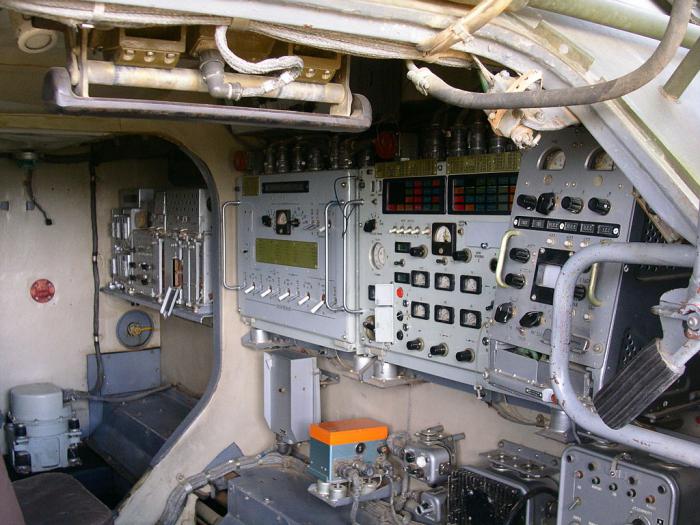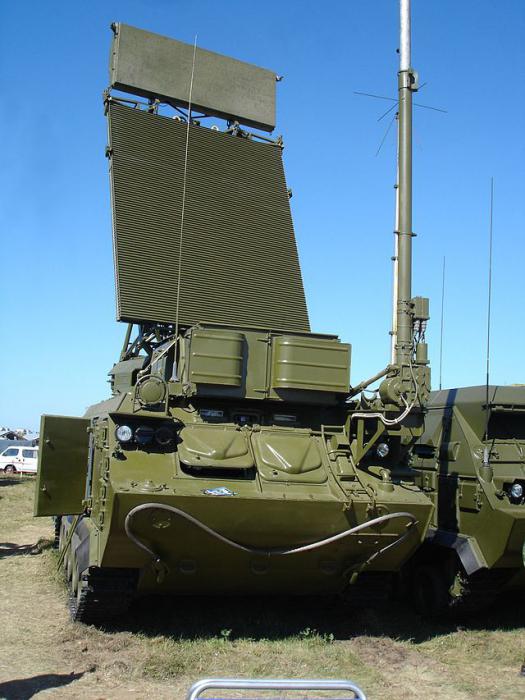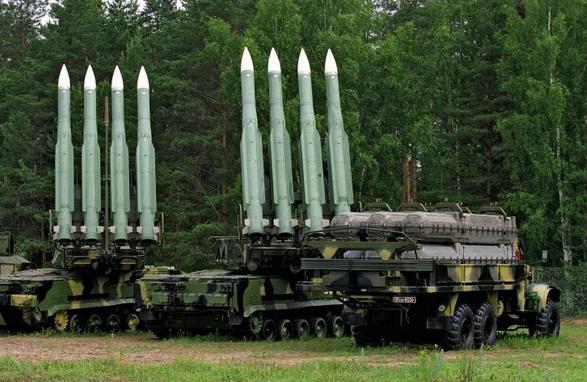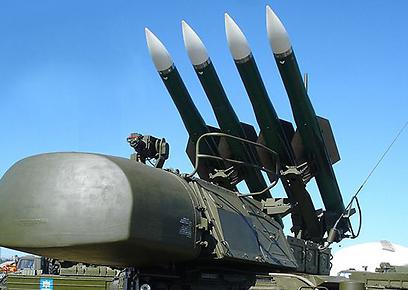Today we will talk about such a type of weapon as the Buk missile systems. This article has nothing to do with politics, so we will consider the purely technical side of the issue. Let's try to figure out a bit what this self-propelled army missile anti-aircraft complex is like, get acquainted with its tactical and technical characteristics, firing range, in short, with all its abilities. So, we have the Buk installation.
The beginning of the story
First you need to determine the purpose of this installation. It consists in destroying aerodynamic targets flying at medium as well as low altitudes at a speed of up to 830 m / s, maneuvering with 12-unit overloads and at ranges of up to 30 kilometers. In accordance with the well-known Decree of the Council of Ministers of the USSR and the Central Committee of the CPSU of January 13, 1972, and began its development. Involved in this team of developers and manufacturers, who previously participated in the creation of the air defense system "Cube". Along with this, they appointed the development of the M-22 complex, called the "Hurricane", for the Navy using a missile that is fully compatible with the Buk.
Developers
The following were identified as developers: Scientific Research Institute of Instrument Engineering, as well as a scientific and design association called the Phazotron. A. A. Rastov was appointed chief designer of this complex. The launching and loading installation was created in the Start-up Machine-Building Design Bureau, where the head was A. I. Yaskin. Crawler chassis, unified for the complex’s machines, were developed by the Mytishchi Machine-Building Plant, which was supervised by N. A. Astrov, 9M38 missiles were commissioned to develop the Sverdlovsk Novator ICB. The “Dome” detection and, of course, target designation station was created at the Research Institute of Measuring and Accurate Instruments of the Ministry of Radio Industry. In order for the Buk installation to fully function, a set of maintenance and technical tools was developed on a car chassis. The completion of the preparatory phase was scheduled for the second quarter of 1975.
Change plans
By a resolution of the Council of Ministers of the USSR and the Central Committee of the CPSU of May 22, 1974, in view of the need for the speedy strengthening of air defense by tank divisions with the build-up of Cube regiments that are part of these divisions, it is prescribed to create the Buk complex in two stages. First of all, it was necessary to quickly develop a guided anti-aircraft missile and self-propelled firing complex, which could launch 9M38 missiles, as well as 3M9M3 of the existing Kub-M3 complex. Then, on this base, they had to create a “Buk” - a new generation missile system. And in September 1974 to ensure his participation in joint trials. But, regardless of this, the previously set deadlines should have been fully respected.
Fire self-propelled gun 9A38
It was mounted on the GM-569 chassis, and in one installation it combined the functions of self-propelled launchers and SURN, which were used in the Kub-M3. The 9A38 setup created provided a high-quality search in a given sector, performed detection and subsequent capture of targets for automatic tracking. She also solved the tasks before launching, launching and homing three missiles that were located on it, and other three 3M9M3-guided missiles from the 2P25M3 PU paired with it.
The firing system could work both from SURN and autonomously. Its weight is 34 tons. Consisted of the Buk air defense system from: radar 9s35; digital computing system; optical television sight; starting devices with a power follow-up drive; a ground-based radar interrogator that operates in the Password system; equipment with SPU and SURN; gas turbine generator; orienteering equipment, topographic reference and navigation; life support systems.
Functions of the radar station 9S35
By the time described, significant progress has been achieved in the creation of quartz and electromechanical filters, microwave devices, digital computers, which made it possible to combine the functions of the backlight, detection and tracking stations in the 9C35 radar station , which is part of the Buk complex. It used two transmitters - pulsed and continuous radiation, she herself worked in the centimeter wave range. One transmitter detected and followed targets, the other - illuminated targets and guided anti-aircraft missiles.

The antenna system carried out a search by sectors, the electromechanical method of processing the received signals was performed by a central computer. The transition time of 935, part of the Buk air defense system, from standby mode to combat was less than twenty seconds. The speed of the targets was determined with an accuracy of +10 to -20 m / s, which ensured their selection in a moving state. Possible errors: the rms when measuring the angular coordinates was 0.5 d.u., the maximum range was 175 meters. The station was protected from all active, combined and passive interference.
9M38 anti-aircraft missile
In this missile, which is part of the Buk air defense system, a solid-fuel dual-mode engine was used. Due to the complexity of mining, they refused to use direct-flow pipe. In addition, he possessed great resistance in some, mainly passive, sections of the trajectory and was unstable at large angles of attack. For these reasons, the deadline for creating the Cube air defense system was disrupted. The missile design was normal, standard, X-shaped, with a wing of small elongation. At first glance, its appearance was reminiscent of anti-aircraft missiles of the ship families “Tartar” and “Standard” made in the USA, which fully corresponded to size restrictions for the USSR Navy.

In front of the 9M38 were autopilot equipment, semi-active GMV, warhead and power. The rocket did not have parts separating in flight, its length was 5.5 meters, diameter 400 mm, steering span 860 mm. It was equipped with a homing head, which had a combined control system using proportional navigation. “Buk” - a missile system having such a missile - could hit targets flying at an altitude of 25 meters to 20,000 and a range of three and a half to 32 kilometers, its speed - 1000 m / s. The missile had a weight of 685 kg, including 70 kg of the warhead.
Tests of the Buk installation
The Buk installation from August 1975 to the end of October of the following, 1976, passed state tests. They were led by Bimbash P.S., and they were carried out on the territory of the Embena training ground. As you can see, the Buk installation (a photo of it is presented in the review) consisted of: SURN 1C91M3, 9A38 firing system, 3M9M3 and 9M38 anti-aircraft guided missiles, self-propelled PU 2P25M3, as well as maintenance vehicles. As a result, some amendments were made: the detection range of helicopters was 21-35 kilometers at low altitudes, aircraft - 32-41 km.
The
launch time from the moment the target was detected was 24-27 seconds. Charging and discharging time is nine minutes. The defeat of the aircraft with the 9M38 rocket was ensured: at a range of 3.5–20.5 km - with a flight altitude of more than 3000 meters, 5–15.5 km - at an altitude of 30 meters.
The defeat zone in the course parameter was 18.5 km, in height - from 30 m to 14.5 km. The probability of fire damage is 0.70-0.93 when launching one rocket. In 1978, the installation of "Buk-1" ("Cube-M4") was adopted.
Buk Characteristics, Command Post
At the moment, we have learned many details about the weapons we are considering. It's time to group the most basic in one place. So, before us is the Buk complex. The characteristics of his military assets are as follows. 9470 - the command post installed on the GM-579 - provided the display, reception and processing of all data coming from the target designation and detection station, as well as six 9A310 self-propelled guns.

He ensured the selection of the necessary dangerous targets and their correct distribution in manual and automatic modes between self-propelled gunfire, carried out the assignment of responsible sectors and many other important activities. The Buk complex, thanks to the CP, works normally when using anti-radar missiles and in case of interference. The command post can process 46 targets at an altitude of up to 20,000 m in an area with a radius of 100,000 m. Up to six target designations were issued for one station review cycle. 28 tons - the mass of the KP, given the
combat crew of six people.
Station designation and detection "Dome"
We continue the conversation about what the Buk installation is like. Characteristics of the “Dome” - the next stage of its consideration. This station has electron beam scanning in elevation in a 30-40 degree sector with mechanical rotation of the antenna in a given azimuth. The purpose of the 9C18 is the detection and recognition of targets in the air at an altitude of 30 meters to 45.5 kilometers, at a range of up to 120 kilometers. Then, information about the situation in the air is transmitted to KP 9S470. Depending on the installed sector and the presence of interference, the viewing speed is 5-18 seconds for a circular view and 2.5-4.5 seconds for a sector view of 30 degrees. Received information was transmitted over the telecode line during the review period of 4.5 seconds, in the amount of 75 marks. Protection against aiming, response, non-synchronous impulse noise was developed.

Also, regardless of the presence of obstructive noise interference, a fighter located at an altitude of up to 5,000 meters was provided. The “Dome”, which is part of the Buk anti-aircraft system, in turn, consisted of a rotary device, an antenna post, an antenna tracking device, a receiving device, a transmitting device, and other systems. The station went into combat position in five minutes from the stowed position, from standby - in 20 seconds.
Differences firing systems 9A310 and 9A38
The first installation from the second (Buk-1) was different in that it connected via a telecode line not with self-propelled launchers 2P25M3 and SURN 1C91M3, but with ROM 9A39 and command post 9C470. The 9A310 also had four 9M38 guided anti-aircraft missiles on its launcher, rather than three. It was charged in 12 and a half minutes from the ROM and 16 minutes from the transport supply machine. Weight - 32.4 tons, including four people of combat crew. The width of the fire self-propelled gun is 3.25 meters, the length is 9.3 meters, the height is 3.8 meters. Let's look further what the Buk complex consists of. The photo will help us in this as always.
9A39 - launcher-loading installation
This ROM was installed on the GM-577 chassis. Its purpose is the storage and transportation of guided anti-aircraft missiles - eight pieces, four of which were on stationary lodgements, four on a launcher. It was also intended for launching four guided missiles, their further self-loading from lodges, and the subsequent self-loading of eight missiles from a transport support vehicle. Thus, “Buk” is a missile system that combined in one ROM the functions of self-propelled launchers of the earlier complex “Cube” and TZM.
It included: a starting device with a tracking power drive, lodgements, a crane, a digital computer, telecode communication equipment, navigation, topography bindings, power supply and power supply units. The mass of the installation is 35.5 tons, including a three-person crew, dimensions: width - 3.316 meters, length - 9.96 meters, and also height - 3.8 meters.
Possibilities of the Buk air defense system
This complex had higher combat, external and operational characteristics in comparison with the Kub-M4 and Kub-M3 complexes. Even if you just look at what the Buk installation is, a photo of its weapons, then any person will understand all its power, which provided:
- Good reliability of target detection due to the fact that a joint survey of the surrounding space by six self-propelled guns and a target designation and detection station is organized.
- Simultaneous, up to six targets, shelling by the division, and, if necessary, with the autonomous use of self-propelled guns, the performance of up to six independent combat missions.
- Strong protection against interference through the use of on-board computer homing head and a special type of signal backlight.
- Due to the increased power of missiles (its warhead) - a very high efficiency of hitting flying targets.
Conclusion
According to the results of modeling and testing, it was determined that the firing range of the Buk installation is from 3 to 25 kilometers at an altitude of up to 18 kilometers and a speed of up to 800 m / s. In this case, a high-quality firing of targets that do not maneuver was provided. The probability of defeat was 0.7-0.8 when firing one guided missile and course parameter up to 18 km. If the target maneuvers, then the probability of defeat is 0.6. The Buk complex was adopted by the air defense forces in 1980. From that moment, it was modernized several times to increase combat capabilities and security.